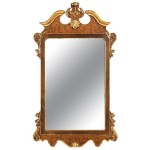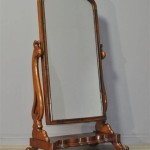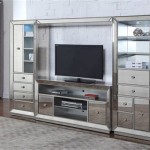How to Remove a Bathroom Mirror That Is Glued to the Wall
Removing a bathroom mirror that's been glued to the wall can be a delicate process. The goal is to detach the mirror without damaging the wall behind it, or worse, shattering the mirror itself. Successfully executing this task requires patience, the right tools, and a methodical approach. Rushing the process or neglecting safety precautions can lead to significant damage and potential injury.
The adhesive used to secure mirrors to walls is often quite strong, designed to provide a permanent or near-permanent bond. This is why simply pulling on the mirror is rarely effective and usually results in broken glass and a damaged wall. Instead, a systematic and deliberate approach is necessary to weaken the adhesive and gradually separate the mirror from the wall surface.
Before commencing, it is essential to protect oneself from potential flying glass fragments by wearing safety glasses and gloves. Covering the floor area beneath the mirror with a drop cloth or heavy cardboard will also catch any falling debris and protect the floor from damage. Understanding the risks involved and preparing accordingly is paramount to a safe and successful mirror removal.
Gathering Necessary Tools and Materials
The success of removing a glued bathroom mirror hinges significantly on having the right tools and materials. The specific tools will depend on the size and weight of the mirror, the type of adhesive used, and the wall material to which the mirror is attached. However, a basic toolkit should include the following:
Safety Glasses and Gloves: Protection for eyes and hands from glass shards is non-negotiable.
Putty Knife or Scraper: A thin, flexible putty knife or scraper is crucial for carefully separating the mirror from the wall. Choose one with a sturdy handle and a sharp, but not overly aggressive, edge.
Piano Wire or Strong String: Piano wire, picture hanging wire, or strong fishing line can be used to "cut" through the adhesive behind the mirror. This is particularly useful for larger mirrors.
Heat Gun or Hair Dryer: Applying heat can soften the adhesive, making it easier to separate the mirror from the wall. A heat gun is more effective, but a hair dryer can be used as a less aggressive alternative.
Solvent or Adhesive Remover: Products specifically designed to dissolve adhesives can aid in loosening the bond between the mirror and the wall. Mineral spirits, Goo Gone, or specific mirror adhesive removers are options.
Shims or Wedges: Small wooden or plastic shims or wedges can be inserted between the mirror and the wall to create small gaps and help prevent the mirror from re-adhering.
Drop Cloth or Cardboard: To protect the floor from falling debris and potential damage.
Measuring Tape: Helps determine the dimensions of the mirror and the placement of adhesive.
Utility Knife: Useful for scoring around the perimeter of the mirror to prevent paint or wallpaper from peeling off with the mirror.
Stud Finder: To locate wall studs, avoiding damage during the removal process.
Patience: Perhaps the most critical tool of all. Rushing the process can lead to breakage and wall damage.
Step-by-Step Removal Process
The following steps outline a general process for removing a bathroom mirror that is glued to the wall. It is important to adapt these steps based on the specific circumstances of the project, including the mirror's size and the type of adhesive used.
Preparation: Begin by covering the floor beneath the mirror with a drop cloth or cardboard. Put on safety glasses and gloves. If necessary, score around the perimeter of the mirror with a utility knife to prevent paint or wallpaper from peeling. Use a stud finder to locate any wall studs behind the mirror, as knowing their location can help avoid accidentally damaging them during the removal process.
Applying Heat: Use a heat gun or hair dryer to warm the mirror and the surrounding wall area. Apply the heat in a sweeping motion, focusing on the areas where the adhesive is likely located. Avoid overheating the glass, as this could cause it to crack. The goal is to soften the adhesive without causing damage to the wall or the mirror.
Using a Putty Knife: Gently insert a putty knife or scraper between the mirror and the wall at one of the corners. Work the knife back and forth to try and separate the adhesive. Be careful not to apply too much force, as this could break the mirror or damage the wall. If the knife encounters resistance, reapply heat to the area and try again. Continue working the knife around the perimeter of the mirror, gradually separating it from the wall.
Employing Piano Wire or String: For larger mirrors, using piano wire or strong string can be more effective. Carefully slide the wire or string behind the mirror, working from one side to the other. Use a sawing motion to "cut" through the adhesive. This method requires two people – one on each end of the wire or string – to maintain tension and control the cutting action. This method is especially helpful if the adhesive is applied in vertical or horizontal strips.
Using Adhesive Remover: If the putty knife or wire method is not working effectively, try applying an adhesive remover. Follow the manufacturer's instructions for application and safety precautions. Apply the remover to the areas where the adhesive is located, allowing it to soak in and soften the glue. Then, try using the putty knife or wire again to separate the mirror from the wall.
Inserting Shims: As the mirror begins to separate from the wall, insert small shims or wedges into the gaps. This will help to prevent the mirror from re-adhering and will also provide leverage for further separation. Place the shims strategically around the perimeter of the mirror, ensuring that they are evenly distributed to prevent uneven stress on the glass.
Final Separation: Once the majority of the adhesive has been separated, carefully detach the mirror from the wall. If the mirror is large and heavy, it is best to have a second person assist with this step. Lift the mirror straight off the wall and set it down on a safe, padded surface. Avoid tilting or twisting the mirror, as this could cause it to break.
Addressing Remaining Adhesive and Wall Damage
After the mirror has been removed, there will likely be residual adhesive remaining on the wall. Additionally, the wall surface may have sustained some damage during the removal process. Addressing these issues is crucial before proceeding with any further renovations or cosmetic improvements.
Removing Remaining Adhesive: Scrape off as much of the remaining adhesive as possible using a putty knife or scraper. Be careful not to gouge or scrape the wall surface. For stubborn residue, use an adhesive remover or mineral spirits. Apply the remover to the adhesive, allow it to soak for a few minutes, and then wipe it away with a clean cloth. Repeat this process as necessary until the adhesive is completely removed.
Repairing Wall Damage: Inspect the wall for any damage, such as holes, gouges, or peeling paint. Fill any holes or gouges with spackle or joint compound. Allow the spackle to dry completely according to the manufacturer's instructions. Sand the patched areas smooth with fine-grit sandpaper. Prime the patched areas with a primer that is compatible with the wall paint. Finally, repaint the wall with a paint that matches the existing color. If the damage is extensive, it may be necessary to hire a professional to repair the wall.
Cleaning the Mirror: After removing the mirror, clean it thoroughly with a glass cleaner and a soft cloth. Inspect the mirror for any cracks or damage that may have occurred during the removal process. If the mirror is damaged, it may need to be replaced. Consider the proper disposal methods for glass in your area to ensure a safe and environmentally conscious approach.
By following these steps and exercising caution, one can successfully remove a glued bathroom mirror and restore the wall to its original condition.

How To Remove A Mirror Glued The Wall Forbes Home

How To Remove A Bathroom Mirror Lowe S

How To Safely And Easily Remove A Large Bathroom Builder Mirror From The Wall Site Title

How To Safely And Easily Remove A Large Bathroom Builder Mirror From The Wall Site Title

How To Remove Mirror Off Wallsafely

How To Remove A Wall Mirror Diy Weekend Project Bedroom Rustic Mirrors

How To Remove A Wall Mirror 11 Steps With Pictures Wikihow

Removing A Glued On Mirror From Wall

How To Remove A Glued Bathroom Mirror From The Wall

How To Remove A Large Mirror That S Glued The Wall Emerging Home








